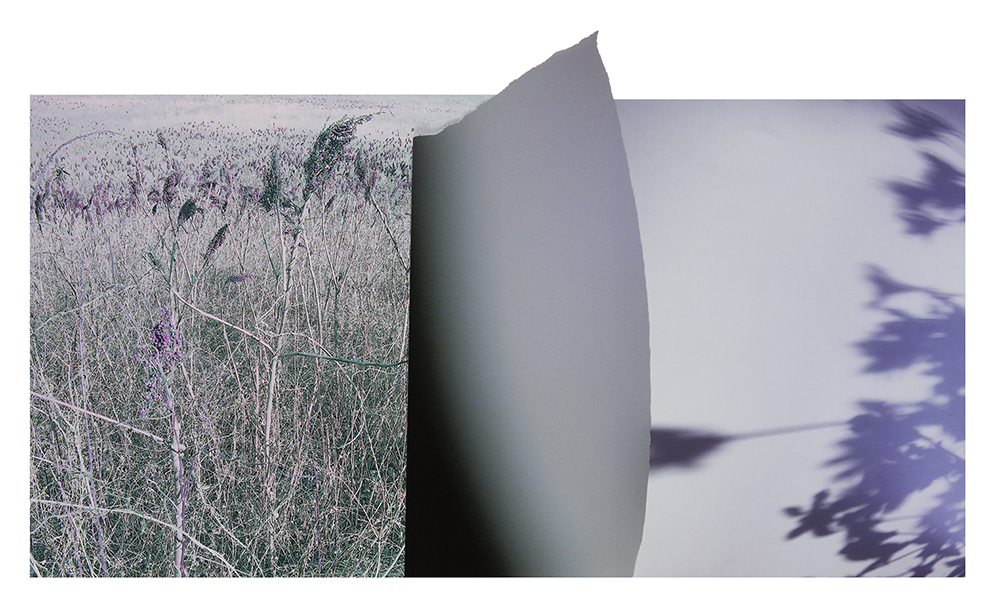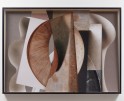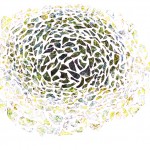Sandi Haber Fifield: Lineations 2
“I have never felt constrained by the parameters of traditional photography and have only rarely been interested in pursuing photography as fact.” – Sandi Haber Fifield
There is an ethereal elegance and intelligence to the work of Sandi Haber Fifield. I have looked at her book, After the Threshold , so many times I have practically memorized it and the work and her ability to connect images has been an inspiration to many. Sandi has a remarkable talent to capture light, shadow, line and plane, as well as details from the natural world and turn them into new incarnations. Her photographs “encourage a slower form of looking than we may usually associate with the medium.” She states, “In many works, you can easily recognize the shapes of trees and flowers, sky and sun, yet you are not always sure of what you are looking at, of where you are, and how you got there. These works acknowledge the inadequacy of visual perception alone in our quest for knowledge, of ourselves and our world. The photographs in Lineations 2 are images that originate in objective reality but move us beyond the merely seen towards a more complex, intuited and subjective reality. ”
Yancey Richardson Gallery in New York City recently opened Lineations 2, an exhibition of new photographs where the artist combines torn and layered photographs, graphite, wax pastel and vellum to shift our understanding of photography away from the fact-based or documentary, towards a material-based, intuitive process which challenges our expectations of the expressive potential of the medium.
Lineations 2015–2018
Unique Archival Pigment Prints; Graphite; Wax Pastel; Vellum; T-pins.
Exhibited in Frames Ranging from 6”x10” to 20”x 40”
“Everything is about two things coming together.”
–Ann Hamilton
A lot of my time has been spent making sense of a world that is beyond our limited capacity to make sense of it. We see the world – encounter it — all at once, and remember it, at best, in snippets. Hence, true perception is a composite of smaller, more fleeting moments. If arranged just right, and contemplated at leisure, perhaps the beautiful, sublime enormity-of-it-all will unfold itself to our limited vision. Better an intimate scale than a vast terrain. Nature would speak to us, I believe, quietly, if Nature is to be heard at all.
Lineations is the culmination of more than 25 years’ worth of looking and working in a method that combines straight and altered photography, transparent layers of vellum, and hand-drawn elements of carefully variegated line weight; all are brought into a balance where no one material element outweighs the other. Vellum acts as a mixer of color much in the way a filter might act on a lens. Spindly green vines, captured photographically, are echoed by spindly, meandering lines of graphite rendered manually. The haptic and the visual combine into a compositional whole that is light on its feet and yet encourages ponderous conceptual investigation. As I hold my camera, I strive to find ways to bring the architectonic into dialogue with Nature. Back in the studio, as I arrange my photographic and hand-made elements, I do so with a mind to reveal the act of perception, itself. When all the different pieces of a composition finally come together into a seamless whole, there is a kind of registered harmony, and I reveal the se-er along with the seen.
In many works here, you can easily recognize the shapes of trees and flowers, sky and sun, yet you are never quite sure of what you are looking at, of where you are and how you got there. This lack of grounding is the Experienced world, where your own senses are affirmed. In LC18_248, ripped areas of paper create a visual “stop” to the photographic illusion of a mass of vegetation and at the same time they allude to the fibers of the plants themselves. In LS17_222, a row of flowering shrubs is visible only as shadows, attesting to their solid presence outside the frame (much, perhaps, like our own). These irrepressible vegetal things aren’t just the subject of my gaze, but I’d like to think that, in a way, we are almost seeing the man-made world through their “eyes.” They cast their shadows on to geometric planes; they (somehow) sprout up and live in tight spaces between walls and fences, make their home in asphalt cracks, and crawl over rectangular elements with impunity. I simply extend their world with my pencil, connecting it with my own. And in the process, render my memory timeless. – Sandi Haber Fifield
Sandi Haber Fifield was born in Youngstown, Ohio in 1956. She received her MFA in photography from Rochester Institute of Technology in 1981 and soon thereafter received a New York State Creative Artists Program Grant. Her work has been widely exhibited in galleries and museums throughout the United States including The Art Institute of Chicago; The DeCordova Museum; The Museum of Modern Art; The Oakland Museum; The Southeast Museum of Photography and The St. Louis Museum. Her photographs are represented by Yancey Richardson Gallery, New York City and Robert Klein Gallery, Boston.
Since the 1980s, Haber Fifield’s work has explored the visual, psychological and formal possibilities in creating composite pictures, whether it is the layering of images in the analog process of multiple exposure in-camera or by challenging logic and blowing apart the traditional expectation of ordered images on a wall. In her monograph After the Threshold (Kehrer, 2013), Haber Fifield portrays a world of fractured ties between images made whole through lyrical free-associative visual reasoning. The photographs convey a preset pictorial structure of either three or four images printed on a single sheet of paper. Noted photography writer Vicki Goldberg says, “Sandi Haber Fifield’s photographs float on the colors of memory, mood, feeling, and suggestion. They combine the indistinctness of memory with the imperfections of photography to produce elusive, incomplete reconstructions of times, events, and sentiments at the far reaches of perception.”
Her second monograph Between Planting and Picking (Charta, 2011) saw a return to straight landscape photography with pictures of small family run farms. In that body of work her photographs imploded, rather than expanded the photographic process, creating a panoply of exacting and complex relations within a single frame, a dismissal of the documentary photograph as a narrative vehicle.
In 2009 Charta published Haber Fifield’s monograph of grids and multiple image installations, Walking through the World. Richard Klein, Director of the Aldrich Art Museum says, “Sandi Haber Fifield’s haunting and quietly beautiful work with multiple images is extremely pertinent to this moment in photography’s continuing evolution. Her approach forces the viewer to slow down and consider the relationship between images. Never bombastic or sensational, the artist’s work is both a corollary to our current visual environment as well as its antidote.”
Haber Fifield’s work has also appeared in Fabrications by Anne Hoy; Picturing California by Therese Heyman; and Defining Eye: Women Photographers of the 20th Century and The Photography of Invention by Merry Foresta.
In 2015, collaborating with poet David Gorin, Haber Fifield published a limited edition portfolio, But That One Let Go. It consists of thirteen prints and thirteen poems with an edition of 15, plus five artist proofs. All images are printed by the artist and contained in a clamshell box. (Please see “Portfolio and Books” section.)
Since 2015 she been expanding her photographic practice with “Lineations”: a series that includes hand-drawn marks, layers of vellum, and other material interventions that interrupt the flat nature of the medium, driving the work into the realm of photo-based construction.
Posts on Lenscratch may not be reproduced without the permission of the Lenscratch staff and the photographer.
Recommended
-
The Female Gaze: Alysia Macaulay – Forms Uniquely Her OwnDecember 17th, 2025
-
Bill Armstrong: All A Blur: Photographs from the Infinity SeriesNovember 17th, 2025
-
Robert Rauschenberg at Gemini G.E.LOctober 18th, 2025
-
Erin Shirreff: Permanent DraftsAugust 24th, 2025
-
Shelagh Howard: The Secret KeepersJuly 7th, 2025









































































